The discipline of designing and constructing a building, facility, environment, or ambience which is beautiful, durable, and has utility is called architecture, and its professionals are known as architects. Architecture is to an architect what a garden is to a gardener. A garden wherein the plants cannot thrive is not a success, and similarly, an architecture wherein people cannot live happily or which people cannot enjoy utilizing is simply a failure.
Architecture is as old as human civilization and has been evolving constantly from the civilizations of: Harppa and Mohenjo-daro; the archeological world heritage in Pakistan, through the development of the great Egyptian pyramids of Giza, to the emergence of the recent tallest building of the world; the Burj Khalifa of Dubai. Architecture may be of residential, religious or cultural value and reflects the life style of different communities in different geographical areas and times in history. It was perhaps taken against the prevalent etiquettes to cite, credit, or mention the names of the architects in the presence of the great rulers. The names of the architects of many great architectures like the Colosseum, the Pantheon, the Leaning Tower of Pisa, which stand out prominently on the surface of the Earth even today, are shrouded in a thick fog of anonymity.
1. Imhotep
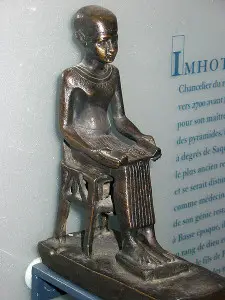
Imhotep is the first name mentioned in the history of architecture. Nothing is known with certainty, though historians opine that Imhotep was born in Ankhtowe; a suburban village of the Egyptian city of Memphis somewhere near today’s Cairo. He was a commoner by birth but achieved the highest status as a result of his intellect and skills. Imhotep built the first pyramid of Egypt. He was a multi-disciplinary person and was also known as a doctor, philosopher, poet, and the chief minister to the second king of Egypt’s third dynasty. Later generations raised him to a lesser god and then to the status of god.
2. Ustad Ahmad Lahouri
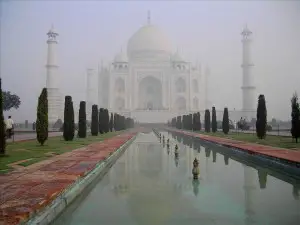
Ustad Ahmad Lahouri was the chief architect of the Taj Mahal built between 1632 and 1648. He was a courtier of the Moghul Emperor Shah Jehan. The Taj Mahal is one of the seven wonders of the world. Ustad Ahmad Lahouri also laid down the foundation of the Red Fort in Lahore, Pakistan. The TajMal is a marble mausoleum, and it is located in Agra City of India. Moghul Emperor Shah Jehan built it in remembrance of his wife Mumtaz Mahal, and it is considered an icon to love. The Taj Mahal was declared a UNESCO World Heritage Site in 1983.The Taj Mahal is considered the most beautiful of all the Moghul architecture.
3. Adrian Smith

Adrian Smith was born in Chicago, Illinois, U.S. on August 19, 1944. He was educated at the University of Illinois, Chicago and graduated with a Bachelor of Architecture from the Texas A&M University. Smith’s works have been displayed in the museums of U.S., Europe, Asia, and the Middle East. His projects won 2 ULI Awards for Excellence;.5 international awards, and 8 National AIA Awards, 22 AIA Chicago awards. He is a Senior Fellow of the Design Futures Council.
4. Gustave Eiffel
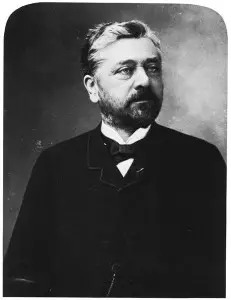
Alexander Gustave Eiffel was born in Dijon, Cote-d’Or, France on December 15, 1832 and died in Rue Rebelais, Paris, France on December 27, 1923. He was educated at E’Cole Centrale, Paris as a Structural Engineer. He was a famous architect, entrepreneur, and specialist of metallic structures. Gustave Eiffel is best known for designing the world-famous Eiffel Tower, built in 1887-1889 for the Universal Exposition in 1889. The Eiffel Tower; also known as ‘le Dame de fer’ was named after him in recognition of his great work. It is the most visited paid monument in the world. It is 324 meters (1,063) feet tall. Millions of people ascend it every year. Gustave Eiffel also designed the Statue of Liberty; a gift from France to the U.S. The Eiffel Tower and Statue of Liberty are enough to assess his greatness.
5. John Nash

John Nash was born on January 18, 1752 and died on May 13, 1835. He is best known for remodeling Buckingham House to Buckingham Palace. He also designed the Royal Mews and Marble Arch. The arch was originally to stand at the entrance of Buckingham Palace as a Triumph Arch, but was moved, as desired, by Queen Victoria after the building of the East Wing, and the Marble Arch served as an entrance to Hyde Park and The Great Exhibition. There are numerous memorable works to his credit, and a few of them are: St. David’s Cathedral, Fenton House, Boncath, Zion House, Tenby, Cardigan Gaol, and Herman Hill House.
6. Benjamin Henry Latrobe
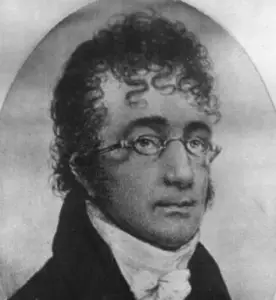
Bejamin Henry Latrobe was born to Reverend Benjamin Latrobe and Anna Margretta Antes in the Fulneck Moravian settlement near Pudsey,West Yorkshire, England on May 1, 1764. He died in New Orleans, Louisiana on September 3, 1820 at the age of 56. Since early childhood, Latrobe enjoyed buildings, the environment, and drawing. He is best known for designing the United States Capitol and the Baltimore Basilica which was the first Roman Catholic Cathedral in the United States. The Baltimore Basilica’s construction started in 1806 and was completed in 1821. Designing of the St. Louis Cathedral was his last architectural project. Benjamin Henry Latrobe died of yellow fever and was buried in Saint Louis Cemetery where his son, who also died of yellow fever many years ago was buried.
7. Arnolfo di Cambio

Arnolfo di Cambrio was born in 1240 in Colle Val d’Elsa, Tuscany and died in 1310. He was a famous Italian architect and sculptor. He portrayed King Charles I of Anjou, and his famous statue was housed in Campigoglio. Arnolfo’s work has left deep impressions on Florence. His biography is a part of Giorgio Vasari in his Lives of the Artists. Arnolfo left innumerable works of architectural value, and a few of them are: Old Basilica of Santa Maria del Fiore, Florence, St. Peter enthroned inside St. Peter’s Basilica, Monument of Pope Adrian V in San Francesco, Monument of Pope Boniface VIII in Florence, and many others.
8. Donato Bramante
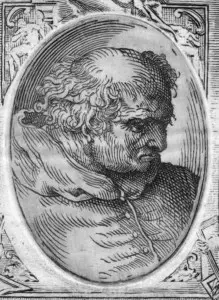
Donato Bramante’s birth name was Donato di Pascuccio d’Antonio. He was born in Fermignano, Italy in 1444 and died in Rome on April 11, 1514 at the age of 70. This Italian architect introduced the ‘Early and High Renaissance style’ to Rome. He is best known for his design of St. Peter’s Basilica, Pietro in Montorio, and Christ at the Column. He was court architect of Duke Ludvico Sforza and designed for him the famous Trompe-I’oeil choir of the Church of Santa Maria Presso San Satiro during 1482-1486.
9. Thom Mayne
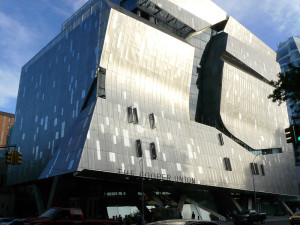
Thom Mayne was born in Waterbury, Connecticut on January 19, 1944. He was educated at the University of Southern California and Harvard University Graduate School of Design. He is the principal of an architectural firm Morphosis located in Santa Monica, California. He is a member of the Holcim Awards Jury. A few of his numerous awards are: Los Angles Gold Medal from American Institute of Architects in 2000, Chrysler Design Award of Excellence in 2001, Pritzker Architecture Prize in 2005, The Edward MacDowell Medal in 2008, and the Neutral Medal for Professional Excellence in 2011.
10. John Hench
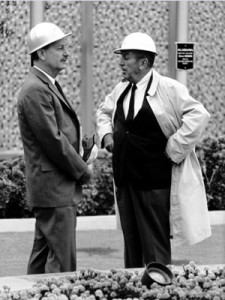
John Hench was born in Cedar Rapids, Iowa, on June 29, 1908 and died on February 5, 2004. He worked for The Walt Disney Company for 65 years, which is by all standards an extraordinary long tenure. He was educated at the Art Students League of New York, Otis College of Art and Design, Los Angeles, the San Francisco Art Institute, and Chouinard Art Institute in Los Angles. Walt Disney respected Hench who starting as a story artist and worked in almost all sections including: animation, background, layout, direction, and special effects, etc. Hench designed many famous icons for Disney including: Micky Mouse Revue, Space Mountain, Tokyo Disneyland, Magic Kingdom, and Cinderella Castle.
Conclusion
No one can ignore the high-profile architecture seen in the animal kingdom. A Tailor bird ensures a freely hanging nest in the choicest ambience, and it is skillfully woven with distinguishing features that the inside temperature of the nest is 10 degrees centigrade higher than the ambient in winter and ten degrees centigrade lower than the ambient in summer. The angular construction and geometry of a beehive is amazing. Anthills are exquisite architectures particularly from a ventilation point of view. All of this indicates that all the living beings do need some aesthetic values in their buildings, and this is what differentiates architecture from engineering.










March 31, 2012 7:50 pm
There are serious problems with this list on both objective and subjective grounds.
Leaving Frank Lloyd Wright off the list is too obvious but you’re also spectacularly provincial not to mention anyone from China or Japan.
For the sake of modernity, R. Buckminster Fuller’s geodesic dome surely is more lasting than designing kitsch for Disney.
April 10, 2013 1:54 am
This site will be inspiration & help for,who is eager to become a archy…….. Thanks……
December 4, 2018 6:15 am
What about Sir Christopher Wren?
Brewster1